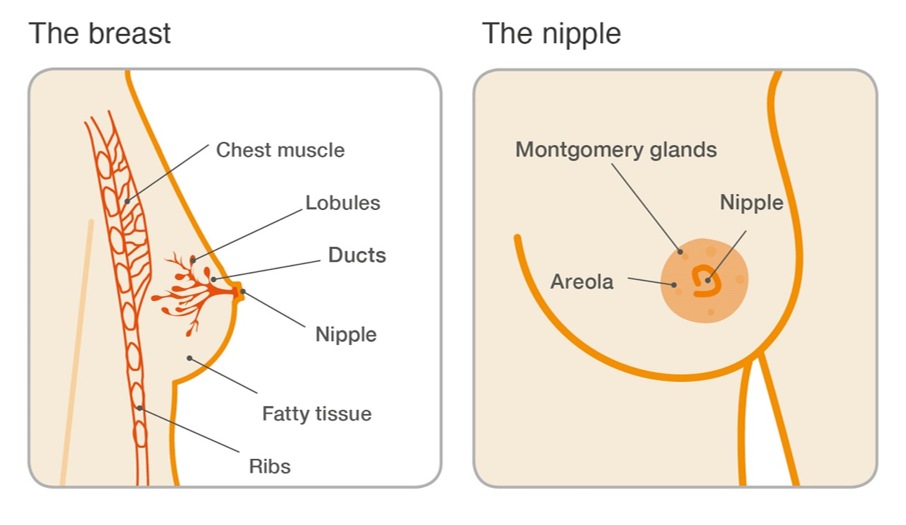Breast cancer can affect both men and women. In 2017, around 54,700 women and around 390 men were diagnosed in the UK.
1 in 7 women in the UK develop breast cancer during their lifetime. It is more common in older women. Less than 1 in 100 males will develop breast cancer.
Am I at risk? – Women
The exact cause of breast cancer is unknown, but certain things can increase your chance of developing it. Breast cancer is likely to be caused by a combination of different risk factors rather than just one. These risk factors include:
• Age – About 8 out of 10 women diagnosed with breast cancer are over the age of 50. Brest cancer is rare in women under 30.
• Having certain breast conditions e.g. Lobular carcinoma in situ (LCIS) or Atypical ductal hyperplasia
• Dense breast tissue – when the breast is mostly made of glandular and connective tissue with very little fatty tissue.
• Hormonal factors – taking HRT for more than 5 years, not having had children or having your first child after the age of 30, not breastfeeding your children, starting periods early (under 12 years) and having a late menopause (after age 55), taking the contraceptive pill (but the risk reduces if you stop taking it)
• Family History – sometimes breast cancer runs in families. Your risk increases if a number of family members have been diagnosed with cancer, particularly if they are closely related or were diagnosed at a younger age.
• Being overweight
• Regularly drinking alcohol, exceeding the recommended guidelines
• Smoking
• Radiotherapy to the chest at a young age (before the age of 30)
For more information on who is at risk of breast cancer, please following this link.
Am I at risk? – Men
Although breast cancer in men is rare, certain things can increase a man’s chance of developing it:
• Age – the risk of breast cancer increases with age and is most common in men over the age of 60
• Family history of breast cancer – men who have close relatives with breast cancer may have an increased risk of developing it themselves
• Klinefelter Symdrome – a rare syndrome relating to chromosones
• Oestrogen levels – men with higher oestrogen levels have a higher risk of developing breast cancer
• Radiation – being exposed to radiation may increase a man’s risk of breast cancer.
• Some occupations – work in hot environments, such as blast furnaces, steel works and rolling mills, may have a slightly increased risk
• Testicular effects – Conditions that damage or affect the testicles may also increase the risk of breast cancer
For more information on who is at risk of breast cancer, please follow this link.
Symptoms of breast cancer in women
Most women diagnosed with breast cancer are over the age of 50, but it affects younger women also. There’s a good chance of recovery if it is detected at an early stage. For this reason, it’s vital that women check their breasts regularly for any changes and always have any changes examined by a GP.
Some of the signs and symptoms of breast cancer include:
• a lump in the breast
• a change in the size or shape of the breast
• dimpling of the skin or thickening in the breast tissue
• a nipple that’s turned in (inverted)
• a rash (like eczema) on the nipple
• discharge from the nipple
• swelling or a lump in the armpit.
Symptoms of breast cancer in men
Breast cancer is often thought of as something that only affects women, but men can get it in rare cases. It grows in the small amount of breast tissue men have behind their nipples. It usually happens in men over 60, but can very occasionally affect younger men.
Symptoms of breast cancer in males;
• A painless lump under the nipple or areaola
• a nipple turning in (inversion/inverted nipple)
• changes in the size or shape of the breast
• a rash affecting the nipple
• discharge or bleeding from the nipple
• a swelling or lump in the armpit
• an ulcer on the skin of the breast.
Patient information
For more information from Macmillan regarding breast cancer, please follow this link.
For more information from Cancer Research UK regarding breast cancer, please follow this link.
For more information from Breast Cancer UK, please follow this link.

